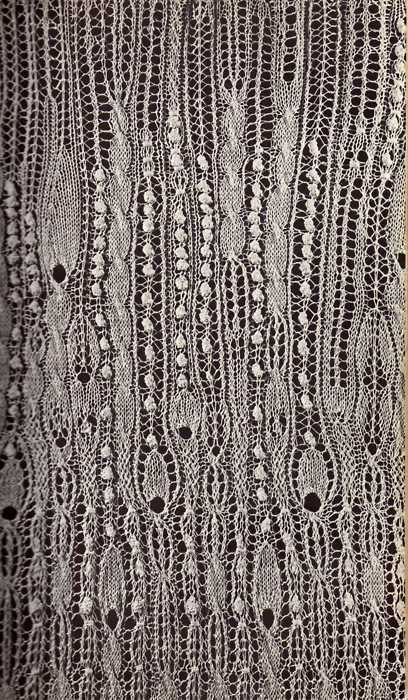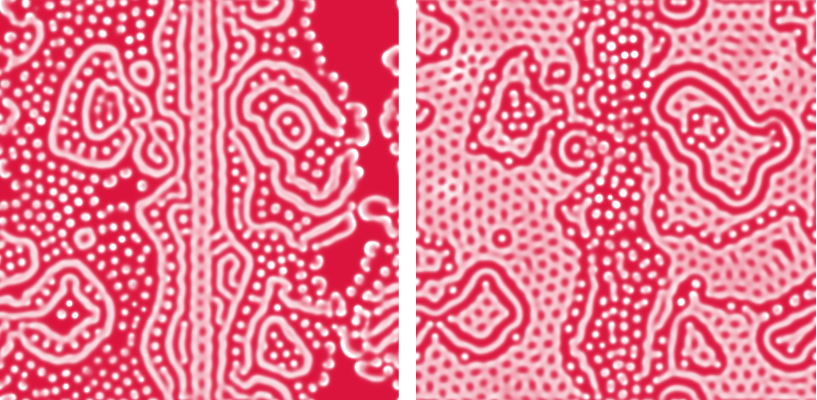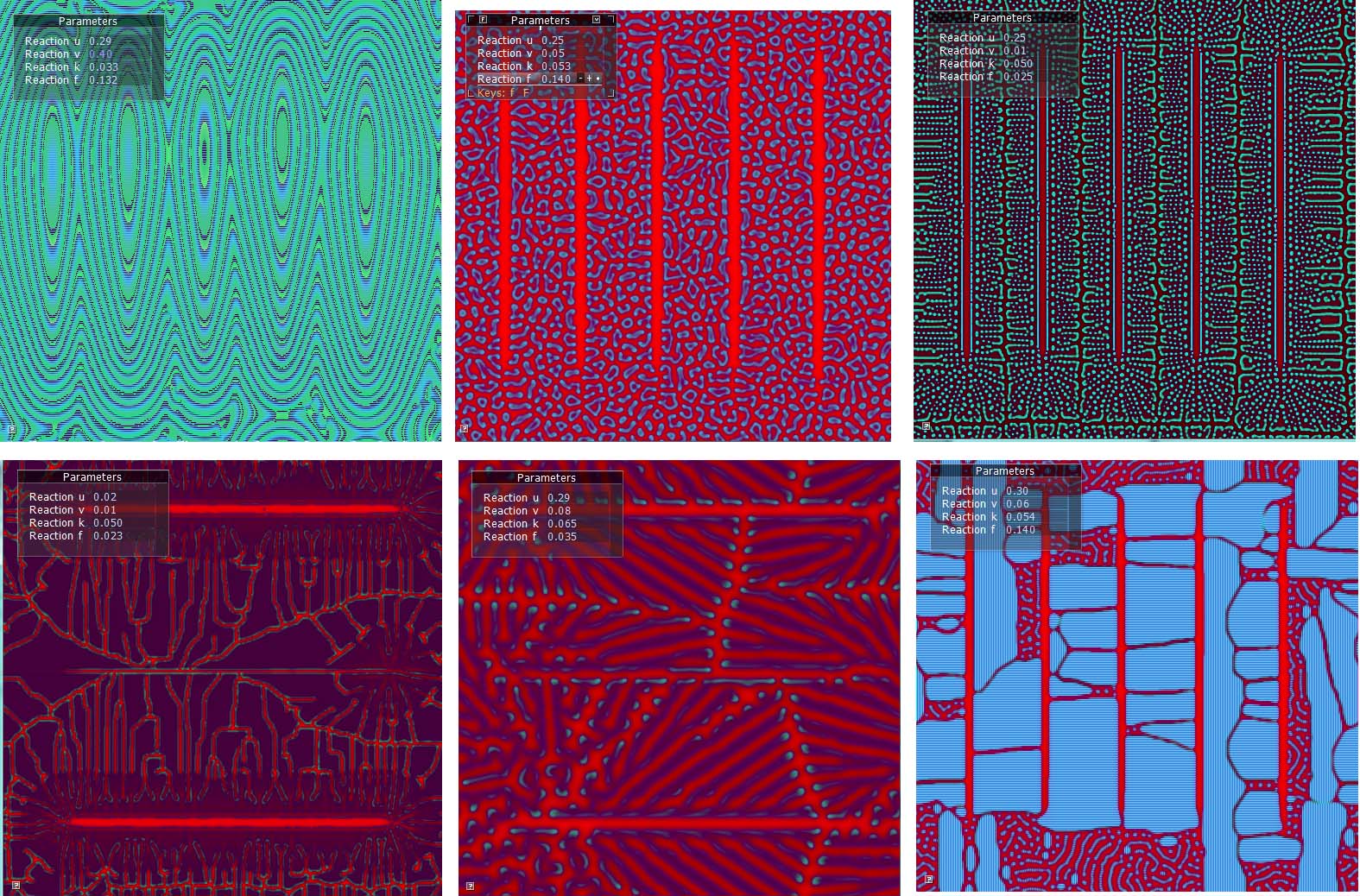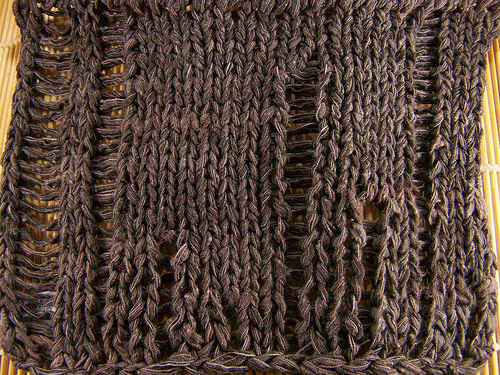Alex Wolfe | Final Project | Checkpoint
So after several miserable knitting machine swatch failures, I’m come to the conclusion that in order to create a visually appealing pattern, I’m going to have to work forwards and backwards, making sure that the generative pattern actually conforms to more “rules” of knitting rather than being purely chaotic.
I found an awesome book, “Creative Knitting: A New Art Form” by Mary Walker Phillip which is chock full of stuff like this which really made me want to step up my aesthetic game.
I also need more stitch variation than the previous sketches were producing in order to create something like this. At the very least eyelets and cables which need to run in parallel lines. So taking a suggesting from Golan I started playing with reaction diffusion that can be spawned off of underlying layers of different equations in order to create more variety in stitch pattern and also more interesting forms. I still like the idea of using it to “grow” your own skin, since the same algorithm is used to produce so many different patterns in nature (often for pelts that we kill for and make into clothing anyway). I’m aiming for a user interactive app that takes some input into the system and generates the pattern for a swatch as far as the software end goes
So here are some initial attempts in processing…
But really its that time again where Processing reaches its limit and its time to port over to Cinder. Fortunately Robert Hodgin and rdex-fluxus had some sample Shader scripts online specifically for reaction diffusion so it was much easier to get started that I initially feared.
Andrew from the Museum of Arts and Design got back to me as well. Unfortunately his machine doesn’t do cables, but I could try substituting different kinds of stitches to mimic the effect.
In the meantime, I bought a super simple SingerLK off of craigslist, and after a pretty rocky learning curve, its actually pretty simple to generate alot of fabric quickly by hand. Also, you can pretty much do any kind of stitch on it (if you’re willing to do the extra work to set it up. So since I’m trying to suppress the gnawing fear that the whole send out my pattern and get it nicely printed and sent back in time for the show is going to blow up in my face, its reassuring to know that if I had to, I’m pretty sure I could generate at least swatches myself.





Sexxy. But are those reaction diffusions working in two dimensions? 1D would probably translate better to your problem space.
– You can get surprisingly complex patterns in 1D based on wave interactions
– I still haven’t returned that shells book to the Pitt library, and since I’m not planning to pay the fines anyway you could borrow it.
– For your backup plan you should make a facebook event and invite some Tepper majors to come knit. I hear they’re done with classes long before we are.
holy cow this is awesome. the graphics look really good. Hopefully this guy isn’t too into Easter.
I’m glad you’re figuring out your knitting problem. :>
wowie zowie! haha
http://encefalus.com/wp-content/uploads/2009/03/cellular_automaton.png
Wolfram’s triangle cellular automata…
http://mathworld.wolfram.com/ElementaryCellularAutomaton.html
http://atlas.wolfram.com/TOC/TOC_101.html < << AMAZING site http://mathworld.wolfram.com/CellularAutomaton.html
http://tones.wolfram.com/about/how.html
Rule 30: http://atlas.wolfram.com/01/01/30/